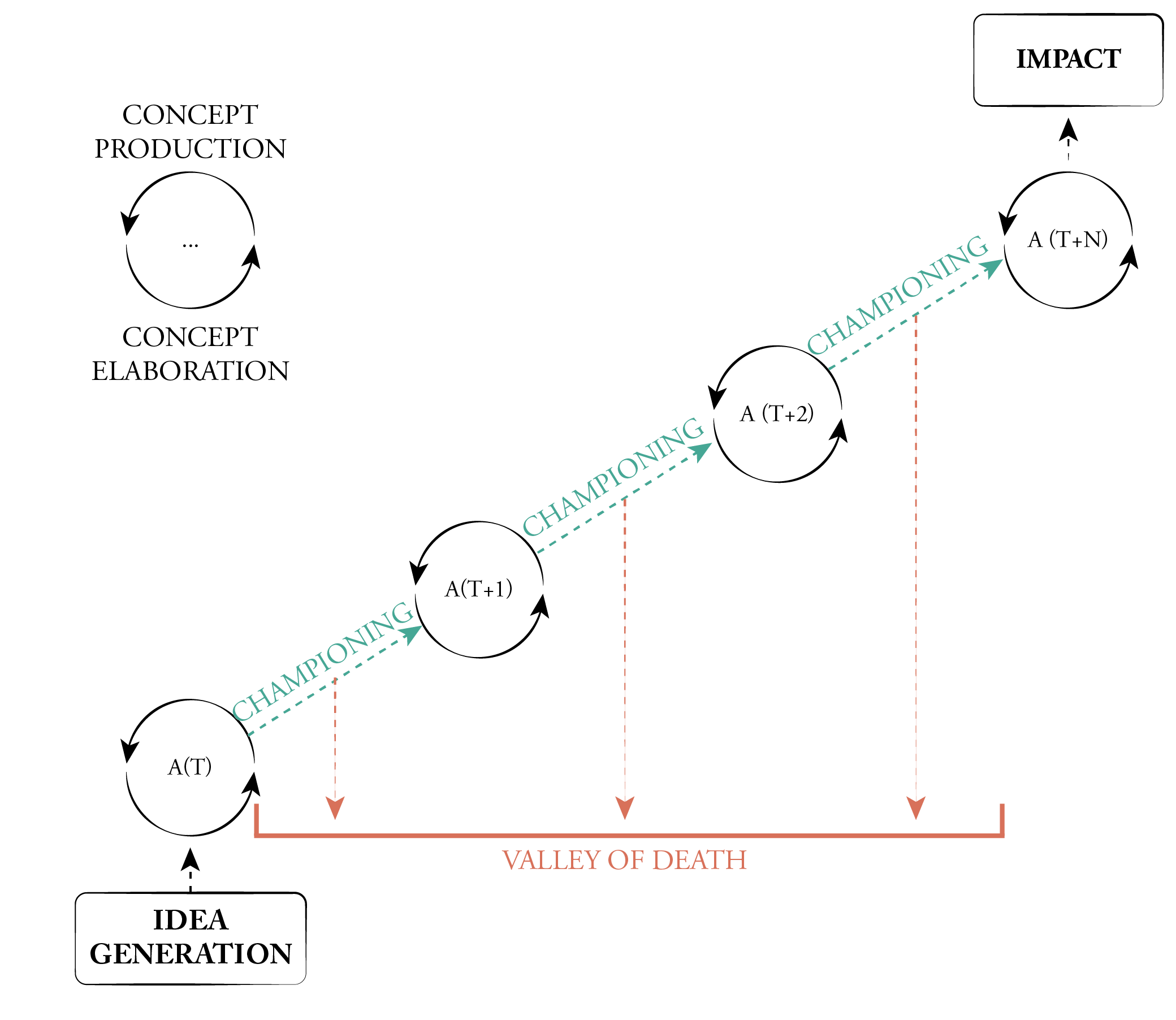Why do innovations end up in the Valley of Death?
When it comes to innovating in large organisations, why do so many concepts die before they are realised? Barend Klitsie’s PhD research explored what organisational conditions help innovators to mitigate the Valley of Death and achieve sustainable implementation.
The challenges of innovation
Klitsie’s interest in the topic arose during his master’s thesis, where he developed a tool for large organisations to identify their major challenges in the innovation process. While testing the tool, he discovered that there was one common challenge that all innovation managers found particularly hard to tackle: implementing innovations.
Building on that, Klitsie wanted to explore the relationship between design practices in innovation and the so-called Valley of Death (VoD) - the gap that exists between concept generation and implementation. Nowadays many companies set up innovation labs or hubs, tasking tech savvy people to come up with ways to improve products or services. But a lot of the ideas generated end up as test concepts and don’t actually impact the bottom line, particularly in large organisations. “Concepts fall into the gap between the people who do research and conceptualisation and on the other hand the people who are running the organisation,” he said.
The illustration at the top of this page and on the cover of Barend Klitsie's thesis is a detail from 'The Objective Truth Factory' by Carlijn Kingma.
Research in action
Presented with a unique opportunity, Klitsie embedded himself within the organisation at KLM (Royal Dutch Airlines). Through action research, a collaborative approach that has some similarities to Research Through Design, he spent 14 months exploring both previous unsuccessful projects and current projects to understand the internal organisational processes. “The core concept is that there is a loop you go through, an improvement loop, which is that you try to understand an issue, develop a hypothesis about what the issue is and how you could solve it, try to implement a solution to improve it and then reflect on what you did,” said Klitsie. “You don’t necessarily solve the problem, but you do learn more about it through the process.”
Building an understanding of the company and the VoD phenomenon, Klitsie then moved towards investigating conditions that contribute to a VoD with a focus on the role of design practices. And finally, he explored how design interventions in an organisational context could contribute to implementation success. From this, he identified ten barriers that impact innovation implementation. These include things like organisational, project and process barriers. “There is always a risk of the Valley of Death,” said Klitsie, “but when one or more of these ten things are present in a project then the chance is higher.”
Knowledge gained, knowledge transferred
The insights from Klitsie’s research informed six guidelines, recommendations that can be used by managers and designers who aim to design organisational infrastructure that facilitates innovation implementation. Part of the benefit of action research, he explained, is that as he learned things so did the company. The knowledge and understanding he gained has already been transferred to KLM and some of the findings of his thesis will be the starting point for their continuing collaboration with TU Delft.
Of the thesis he said: “What I am most proud of is that the Valley of Death was quite a vague concept when I started with it, super high level. Throughout my research I basically redefined the concept and made a model that describes it very clearly. I think this is quite useful for both researchers and practitioners, to do analysis on their work.”
Reimagining design education
There is also an educational component to Klitsie’s research. If designers aim to realise social impact, he asserts that design education needs to adjust to fit this more strategic role. “We need to go beyond teaching future designers how to generate innovative interfaces, products, and systems. We need to teach them how to contribute to implementation and, ultimately, impact. This implies assuming a broader understanding of design, offering students tools and skills to become more sensitive to organisational context and helping them understand what influences implementation and what strategies they may pursue to achieve implementation.”
Post-PhD life for Klitsie includes working for a consultancy where he now gets to put some of this knowledge and experience into practice.




